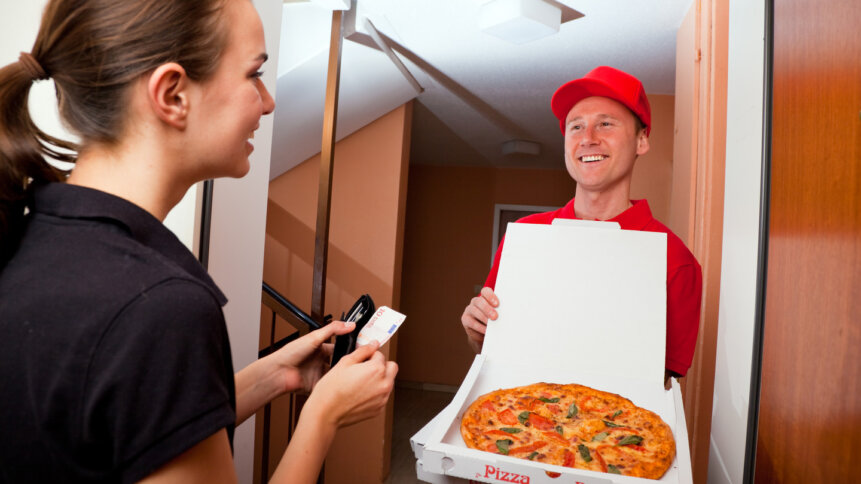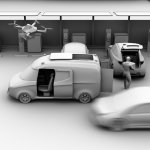Logistics and last mile delivery tracking

We live in a world of Now. We order things now, and expect them to arrive within a highly-specific window of time. Not only that, but the supply chains that keep the world’s trade running also work to these “just-in-time” deadlines. We live in this world because we can. And we can because of logistics and last mile delivery tracking.
What is logistics?
Logistics is, in its simplest terms, the precise description of how a desired result is achieved – how a thing is done.
That means in the modern world, it’s a breaking down of complex processes into many smaller parts on a journey from A-B. Every step in the journey from A-B has to work or the idea of “logistics” falls down and fails.
That means, for instance, if you’re sitting in your living room in, say, Elizabethtown, Kentucky, with your smartphone in hand, and you order anything for delivery from Anywhere.Com – you start a fantastically complex logistics chain in motion.
Even if you’re just ordering pizza from your favorite local restaurant, the logistics chain involves your smartphone working, you having net connection, the restaurant’s website working and being equipped to take orders and payments, the payment process or app working, an API (application programming interface – or machine translator, in essence) connecting the order app to your bank or credit card provider, your bank or card having enough credit to complete the purchase, another API confirming your order with the restaurant, enough staff being employed and not sick to make your order, enough delivery staff being available to get you your order, their delivery transport being fueled up, and their geographical knowledge being sufficient to find you (probably including a multi-billion dollar satellite network in orbit around the Earth).
That’s quite the tech-enabled slice you have there.
The points at which something could go wrong.
And that’s just the obvious, primary logistics chain. We haven’t even started on the subsidiary logistics chain, like the mining, manufacture, and assembly of elements it takes to make the fantastically complicated machine in your hand, or the manufacture of cardboard pizza boxes, or the farming infrastructure it takes to supply your pizzeria with ingredients, or the…
You get the idea? Logistics is the chain of points in any journey from state A to state B (from you wanting pizza to you having pizza, in this case) at which something could go wrong. Successful logistics is the combination of all the work that goes into ensuring that nothing does.
You want pizza now, don’t you? We chose it as an example for a reason beyond making your stomach growl. In the first place, it’s one of the most straightforward local logistics chains imaginable (despite all the technology and potential failure-points involved). That should give you some idea of how complex the logistics chains become if, for instance, you order something from Amazon – where your order has to be received centrally, sorted into a stream of such orders from people in your region, sent to a massive warehouse, run through a fantastically complicated warehouse management system, sorted into pick-lists for warehouse staff, or more probably robots, correctly labelled with your address or at the very least something like it, loaded onto trucks for distribution, and then factored into an optimal route planner for a driver (about which, more later).
Naturally, if you choose to order something from an entirely different country, you add international shipping or air freight, customs duties, port staff, probably cranes, seafarers, phenomenally complex oceanic or air navigation software, and so on, and so on…
Delivery windows with consequences.
But the real reason we needed to make you hungry for pizza is because pizza delivery was one of the first versions of last mile delivery with consequences. If it’s not there within 30 minutes, your pizza is free – right?
That began as a way of both ensuring that the product arrived in as close to peak condition as possible, to be enjoyed by the customer and inspire loyalty, and setting pizza delivery apart from all the other ways it was possible to enjoy cheesy tomato bread.
Now it is literally the way of the world, from grocery deliveries to antique clocks to multiple massive warehouse and transportation chains, to the whole food ecosystem, to vast containerships sailing the oceans on a strict “just-in-time” deadline, with the consequences of lost revenue, missed connections in the logistics chain, loss of corporate reputation and ultimately failure and replacement by companies that don’t miss those deadlines and incur those consequences.
It’s the way at least two generations of people in the West have grown to expect things to be, and the likelihood is that as time goes on and technology gets smarter, the demands for both incredibly slick logistics chains and in particular, last mile delivery services will only get louder, and the deadlines tighter.
What are last mile delivery services?
Without being flippant, last mile delivery services are transportation services that get whatever you order… the last mile to your door. Again, in the pizza delivery business, they’re the delivery person in their car or on their motorcycle with stacks of steaming boxes waiting to be handed over on the doorstep.
But in the world of massive, complex logistics chains, they’re usually either an arm of the manufacturing, retail, or warehousing operation that the customer thinks they’re dealing with, or they’re a specialized company that specifically exists to fulfil that last mile delivery, with drivers in a range of locations, so they can service the needs of many customers and bolster the delivery reputation of the company from which the customer ordered their goods.
Again, these services exist in both the domestic world, bringing your purchases to your doorstep, and in the commercial world, alerting warehouses, supermarkets, malls and the like that deliveries of XYZ products will be arriving today between 11am-noon, so staff and systems need to be ready to unload, prepare, shelve, sign for, and otherwise accept the delivery as requested.
And that brings us to last mile delivery tracking in logistics.
Last mile delivery tracking.
Last mile delivery used to be a relatively imprecise business, in the age before satellite navigation and precise tracking systems.
Now, a combination of the two, along with optimal route planning software means last mile delivery tracking systems can find the most fuel-efficient and timely way to get everyone’s deliveries to them. But that’s by no means all.
Modern last mile delivery tracking systems can also, for instance, allow fleet managers to route their delivery trucks away from traffic hotspots, so as to provide a smoother, less stressful delivery experience and – perhaps surprisingly – incur less wear and tear on the vehicle too. They can plan routes that allow for more continuous driving, which burns less fuel as fumes that escape into the atmosphere. And they empower that whole “30 minutes or it’s free” idea with precision and reliability.
The availability of data.
When, for instance, the company from which you ordered a product says it will text you on the day of the delivery with your half-hour window, and allows you to track your package, so you can watch it as it goes from being eight stops away to five stops away, to three stops away, to at your door, that’s the last mile delivery company making their live last mile delivery tracking data available to customers, and with increasing regularity as the systems get smarter and get fed with more reliable data, those windows for delivery are being hit more precisely day after day.
The same is true at your local supermarket, getting consignments of beef into their cold storage facility at precisely the time they expect them, so they know exactly how long they have to get them prepared and out on the floor to have the maximum chance of turning purchases into profit.
The whole world may be run on the pizza delivery principle these days, but that’s only possible because of a combination of logistical factors – last mile delivery companies, drivers, fleet managers, logistics software engineers, satellite engineers, data layering engineers, fuel burn analysts and above all, last mile delivery tracking, a combination of gadgetry, software, and human expertise.
Which is something worth remembering next time your delivery is ten minutes outside your time slot. Twenty years ago, that level of precision was a science fiction fantasy.
Unless of course you delivered pizzas for a living.










